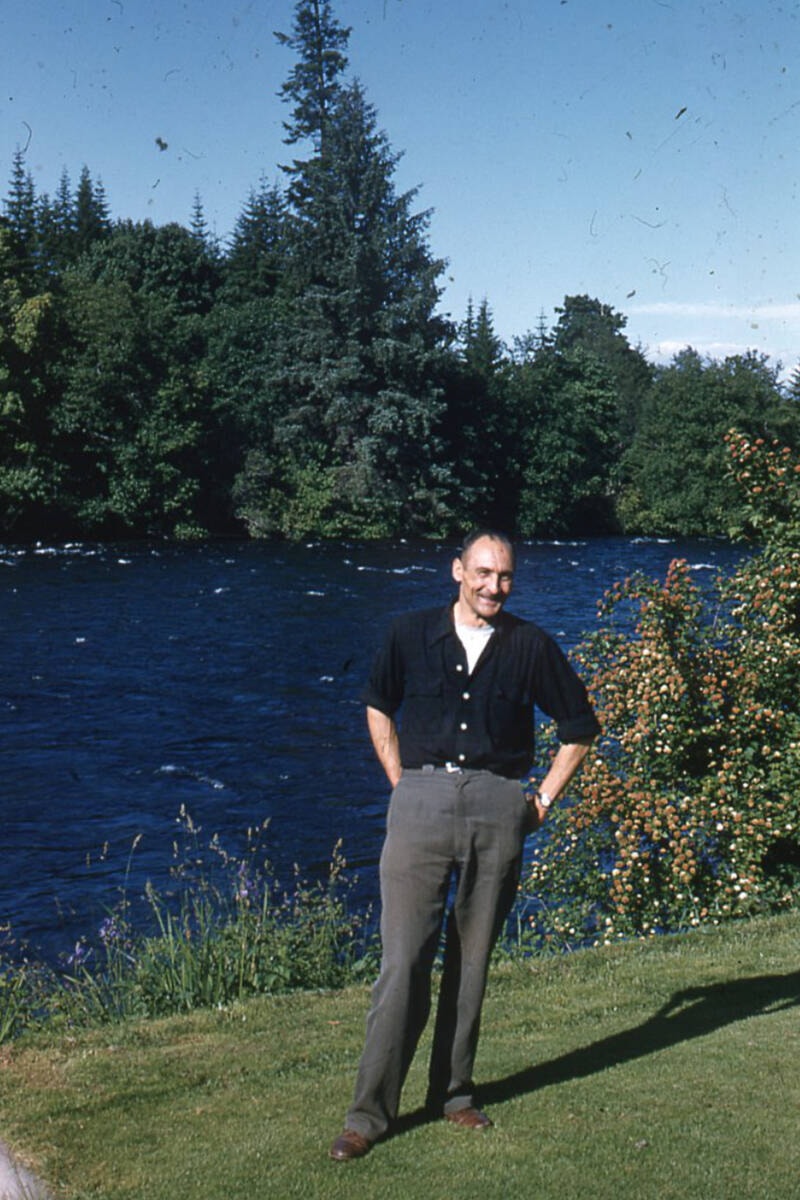By Neil Cameron,
Special to the Mirror
In 1954 a 28-year-old man from Eau Claire Wisconsin came to Campbell River to fulfill a lifelong desire to fish his river of dreams.
Van Gorman Egan, like many anglers around the world, had been captivated by the writings of Roderick Haig-Brown. By that time Haig-Brown had become an international sensation with books like Silver, The Western Angler, A River Never Sleeps, Measure of the Year and Panther.
Haig-Brown lived on the banks of the Campbell River, calling his home Above Tide and the river, his ‘home river.’ He wrote of fishing the Campbell in Fisherman’s Spring which was published in 1951. The Campbell River was, to fly fishers, one of the meccas of the sport.
Egan was in ecstasy when he started to fish the river’s famous Sandy Pool just down from the logging bridge on that July day. How more ecstatic was he when Haig-Brown himself came up behind him, holding out the fly Egan had accidentally broke off on the shore?
Star struck, Egan accepted the fly and an invitation for lunch at Haig-Brown’s house. He no doubt couldn’t wait to tell his friends back in Wisconsin that he had actually met and lunched with the Master.
But would they believe him? Was he, in fact, merely dreaming of his good fortune? He needed a little proof and probably shyly asked if he could take Haig-Brown’s picture. Haig-Brown obliged and Egan took a picture of him standing on the lawn with the Campbell River in the background.
The following year Egan returned to Campbell River and this time Haig-Brown invited Van to fish the Elk River with him at the head of Upper Campbell Lake. Actually fish with the Master!
How cool that must have been. During that August day the two sent their flies searching for trout along the pristine river. At one point Haig-Brown climbed up some canyon rocks and looked out over the river. It was a poignant moment, because in that year the rising water levels from the BC Hydro dams would virtually wipe out the Elk’s lower sections and completely drown the Buttle River.
At that moment, as Haig-Brown pondered the soon-to-come devastation, a small click from a 35 mm single lens reflex camera could barely be heard above the sound of the river.
That picture and the other of Haig-Brown from the previous year were taken on colour slide film. Egan filed them away in a carousel of slide films called “First VI Trips – 1954,1955.”
Van Egan moved to Campbell River soon after, buying his own home on the banks of the Campbell River just upstream from Haig-Brown’s. He became a much-loved teacher at Carihi and authored several books of his own on fishing, including Tyee: The Story of the Tyee Club of British Columbia, The River Series, and Shadows of the Western Angler, a tribute to Haig-Brown on the 100th anniversary of his birth.
Van Egan passed away in July, 2010.
The slides were never turned into prints and to all accounts and reckoning have never been published before. The Museum at Campbell River probably has the most thorough collection of Haig-Brown images and Executive Director Sandra Parrish said, “No I have not seen those photographs of Roderick and definitely think they should be added to the archives here.”
Others in the BC fly fishing fraternity very familiar with the Haig-Brown legacy, including Art Lingren, author of Fly Patterns of Roderick Haig-Brown and several other fly fishing books, also had never seen the images.
Perhaps the most significant key to their exclusivity is that Haig-Brown’s son Alan and daughter Valerie have also never seen them.
Wrote Alan in an email: “I have not seen them before. I think the one with the Campbell River is at the foot of the lawn at Above Tide as the tree in the back ground, although gone now, was quite distinctive.”
Valerie agreed.
“I haven’t seen these before,” she wrote. “The second is at the bottom of the lawn before there were any houses across the river. Thank you for sending them. They do take me way back.”
